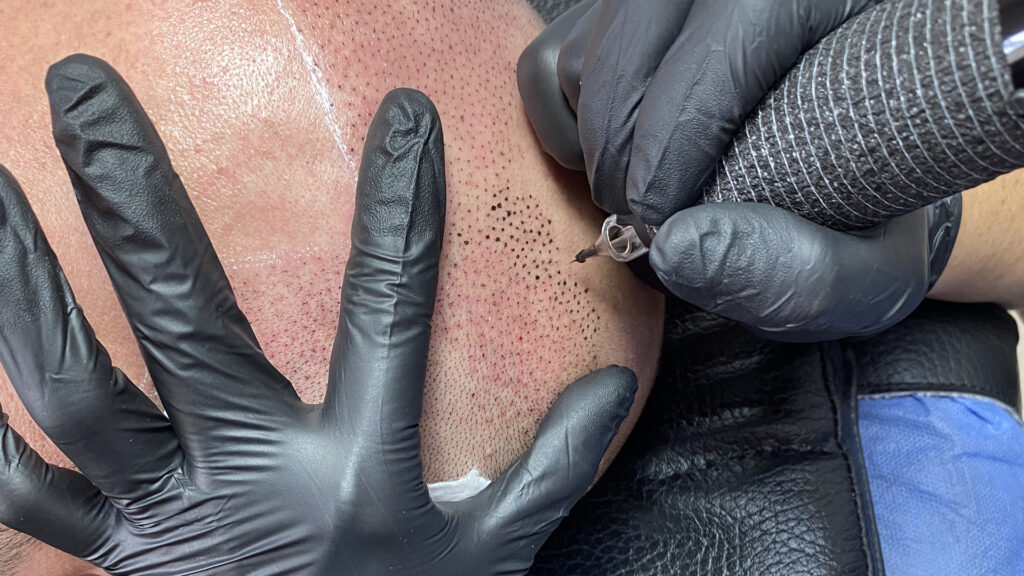A hair transplant procedure is sometimes not a client’s first choice, for a variety of reasons. In such
cases, Scalp Micropigmentation (SMP) can be a very useful cosmetic technique to create a permanent
illusion of hair.
When well executed, SMP can convincingly look just like shaven hair and benefit those who can, and prefer, to have a shaven look. Alternatively, when hair is worn longer, SMP can be used
as an effective camouflaging technique. The tattoo pigment is matched to the colour of a client’s hair
and is applied to the scalp in between the existing hairs. The tiny tattoo marks mimic that of growing
hair and soften the contrast of the thinning hair with the skin to create the appearance of fuller
hair. For many years, SMP has been used by professionals to soften old scars on the scalp left by
previous injuries or surgeries of all kinds.

SMP techniques and results have improved over the years and now show more texture and dimension.
Modern tattooing pigments are also of better quality and there is a wider selection of pigments to
choose from, including organic pigments. SMP remains on the scalp from three to five years and
therefore requires periodic touch-ups as the colour fades. A successful SMP procedure may require up
to three sessions.
Topical numbing creams are usually used to reduce pain and discomfort during the application
of the pigments. It is important to follow after-care instructions and to protect the SMP from
direct sunlight for longer-lasting results. SMP is a science and an art. Cosmetic results vary and
are dependent on the quality of the pigments used and the skill of the performing professional.
If you wish to remove the pigment from a previous Scalp Micropigmentation session, you
have a few options including specialized laser removal, surgical excision or dermabrasion.
Hair Transplantation is frequently used with Scalp Micropigmentation (SMP) to create the feeling
of real hair and to support previously done SMP for a fuller and realistic appearance.




